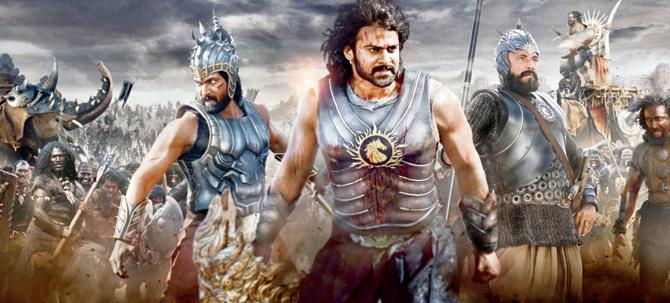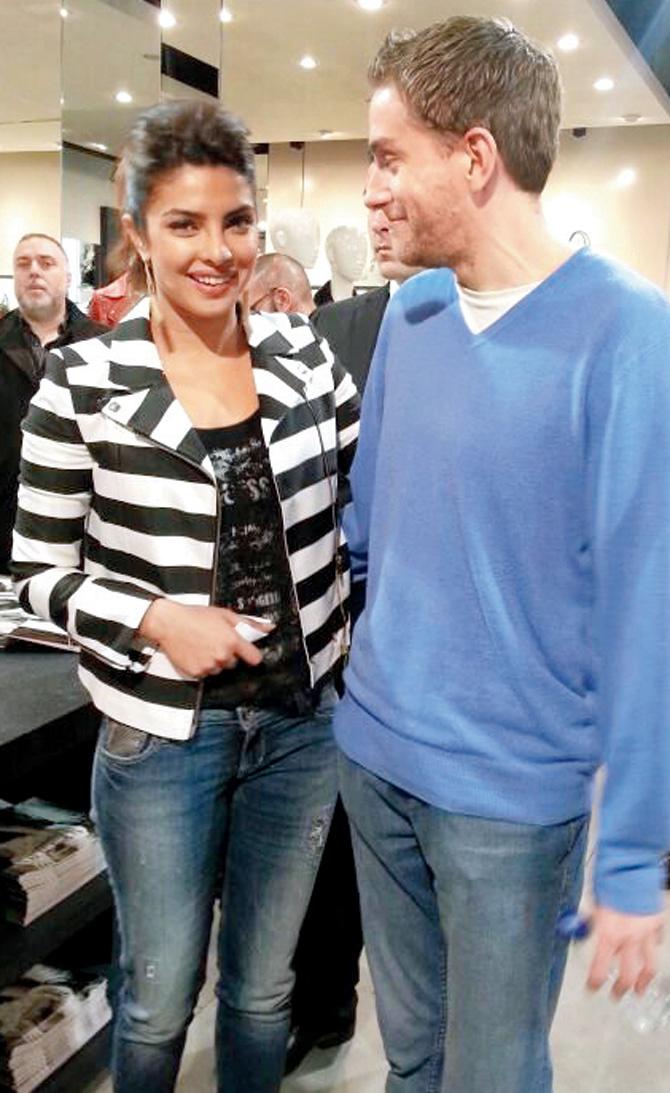One of Hindi films’ most-read reviewers has never set foot in India. The strange story of Mike McCahill’s following

Mike McCahill
ADVERTISEMENT
He is one of Bollywood’s most closely followed critics. And he isn’t Indian. Mike McCahill, who claims to have watched 8,000 movies in his lifetime, was just another cinema hungry youngster lapping up everything shown on the late-night slot of Channel 4, when he happened to watch Mani Ratnam’s Roja. The fledgling film critic was “slightly thrown” by the unusual ‘foreign language film’ that veered “from kidnap drama to lavish romance and back again,” although he loved the musical sequences. A few years later, his girlfriend and her family introduced him to Shah Rukh Khan and Kabhi Khushi Kabhi Gham.

London-based film critic for The Guardian since 2012, Mike McCahill’s introduction to Indian cinema came with Mani Ratnam’s Roja which was being aired on the late-night slot of Channel 4
This was a turning point. The film was burning the UK charts and McCahill knew why. “It was such a great experience! The crowd was laughing and booing, and passing sweets around — and there, before my eyes this tremendous clash between the two stars, who commanded the screen. That’s when I knew I’d be back for more. Then came Lagaan, Devdas... and so it began.”
London-based film critic for The Guardian (formerly with The Telegraph) since 2012, McCahill has emerged as one of the most keenly followed writers on the Internet. Perhaps it has something to do with Indians scattered across the Western world, always keen to learn what the ‘West’ thinks of ‘our’ films. The reviewer does a fine job of balancing his readers’ expectations with his grasp of the peculiar Hindi film industry, although he has never set foot in India.

McCahill gave Baahubali four stars. He says the film left him “energised”. It was, he says, a crowdpleaser, with all the scale and spectacle of an American blockbuster, and with none of the product placement
In fact, the closest he has come to meeting the stars he writes about is a photo op with Priyanka Chopra last year signing catalogues for her new collection at a store on Regent Street in London. Nonetheless, McCahill’s reviews — even when he rips apart the film, giving it one star — make enjoyable reading. A touch of irreverence, some humour with a reasonably solid understanding of films (not just Hindi), being his signature style. His review for Baahubali, for instance, shared a staggering 189,269 times, began thus: “The most expensive Indian movie ever made turns out to have spent a fair bit on getting one man to the top of a cliff and then leaving him hanging.”
He takes a lighthearted dig at producer Salman Khan in the recent Katti Batti review: “Anybody studying auteurism, and its possible application within Bollywood circles, might fashion an instructive double bill out of two current releases. A fortnight ago, director Nikhil Advani’s name appeared on the credits of Hero, a would-be showcase for buff rookie Sooraj Pancholi; throughout that dog’s dinner, you sensed producer Salman Khan — Pancholi’s mentor — looming over Advani, cracking his knuckles. Understandable, then, if Advani turned to his other 2015 project, the tragic romance Katti Batti, for light relief.”
In an email interview to sunday mid-day, McCahill, who has the onerous task of reaching out to the ever growing tribe of Indian film fans around the world, speaks about the kind of film that gets a two-thumbs up and how he negotiates the minefield of Bollywood film reviews.

Select excerpts.
Q. How and where do you get your Bollywood dope from? You know, about personal equations, histories, gossip.
A. Some of it is just out there on Twitter, Facebook, in the press, etc. And you can’t avoid picking it up. I almost always know which party Kim Kardashian has been to, not that I really need to know, or go looking for that information. I have a tremendously knowledgeable and well —connected friend — Ashanti Omkar, who is also a journalist and broadcaster. He fills me in on certain things I ought to know going into particular screenings. By and large, I try and keep a degree of separation between actors’ personal and professional lives — gossip is fun, but it’s not technically journalism — and approach each film as a standalone. But every now and again, something creeps through into the reviews — for example, I thought it was interesting to write about the way Salman Khan was rebranding himself after his legal troubles when reviewing Bajrangi Bhaijaan.
Q. Most of your reviews carry three to two stars (except Baahubali). Is the star rating system adequate?
A. Most of my reviews of English-language films do, too! The truth is that, once you’ve seen 8,000 movies in a lifetime, as I now have, it’s very rare that anything leaps out at you. So, mentally, one tends to group most movies together in the middle. (There are also a lot of average movies out there. That’s why it’s an average…) I still think a three-star rating is a good review — it generally reflects that the film held my attention from first frame to last, or that it had a few outstanding moments, even if the whole didn’t entirely work. Baahubali left me energised — it was at the very beginning of the summer blockbuster season, and I’d seen a couple of the big American films that just smacked of by-the-numbers, for-the-money cynicism, and here was a crowdpleaser that had all that scale and spectacle, on a third of the budget, and with none of the product placement. And with songs! What’s not to love about that?
Q. Whose films do you look forward to?
A. The younger generation of writer-director-producers, who haven’t been watching Bollywood movies all their lives, are reaching a little wider afield, and pulling in influences from afar. So, I’m really psyched to see what Anurag Kashyap does next. I thought No Smoking and Dev D were, with all due respect, the sort of interesting failures only a talented and independent-minded filmmaker would make, but Gangs of Wasseypur felt like a real breakthrough, and even if Bombay Velvet didn’t quite match it, there was a similar ambition there, I thought. I also want to see what Vikramaditya Motwane does after Lootera — I thought that was an outstanding film, and a film you probably couldn’t make anywhere else nowadays.
Q. Who are the actors you find interesting?
A. Gosh, so many. Actors and stars were my way into Hindi cinema when I first started watching, so, I recognised the imposing Mr Bachchan and that funny, clowny, likeable Shah Rukh Khan. And don’t ask me how many actresses I’ve fallen head over heels in love with over the years. I’ve been impressed with the way Aamir Khan generates smart material for himself — especially now that he has such a following that he could coast from film to film, but he always picks scripts that have something to say about the world we are living in. Of the new generation, I’ve enjoyed watching Ranveer Singh. He seems to have that Shah Rukh thing of being able to play any role, any emotion with complete assurance. Priyanka Chopra was moving in Dil Dhadakne Do, and I hope her television commitments don’t stop her from making more movies. I will watch Deepika Padukone in just about anything. And I rather miss Ayesha Takia, who was just a doll in several not-especially-good movies. She struck me as a potentially great comedienne who never quite got the material she deserved. Time for a comeback, maybe.
Q. Which Indian film have recommended to friends?
A. I’ve recommended Baahubali to so many people this year, in private and through my review. It’s the perfect antidote to the sameness of American blockbusters; it leaves you feeling a lot better about the state of cinema. (Of course,
if Tamil cinema now goes and makes as many mythological blockbusters as Marvel Studios are making comic-book movies, we’re doomed). I’ve found myself recommending Om Shanti Om too — particularly to English readers who’ve never seen a Bollywood film and want to know where to start. That film has it all.
Q. Compare a bad Bollywood film with the worst from Hollywood you’ve seen.
A. Oh, it’s almost always going to be the Hollywood film [that’s worse]. I mean, even nonsensical junk like Hero or Singh is Bliing have 30 seconds of a catchy tune or a nice shot of a mountaintop. I find the cynicism of the bad Hollywood product toxic and stifling; mostly, Bollywood’s problems are caused by naivety — in the bad movies, there’s a sense that the people behind the camera just didn’t know what they were doing. Whereas Hollywood has been at this game long enough to always know.
 Subscribe today by clicking the link and stay updated with the latest news!" Click here!
Subscribe today by clicking the link and stay updated with the latest news!" Click here!







